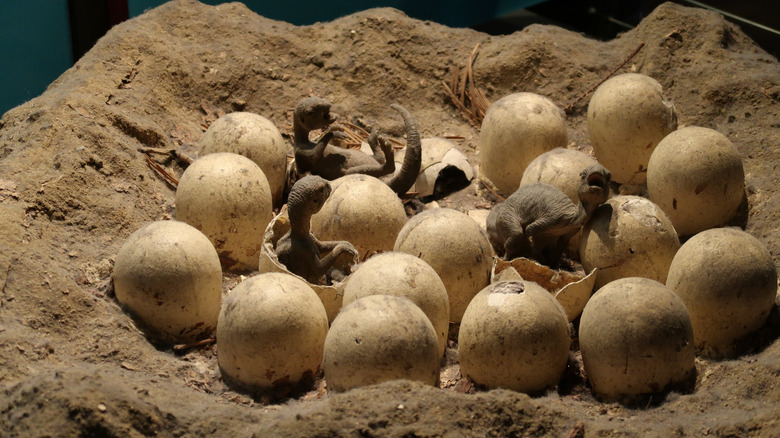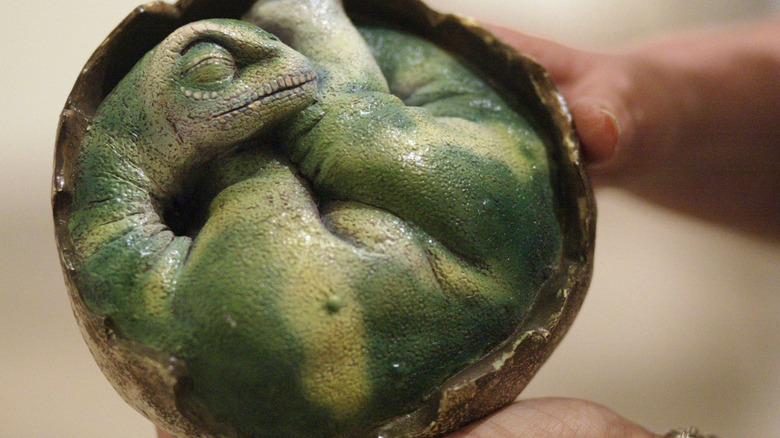One-Of-A-Kind Fossil Will Have You Looking At Birds In A New Light
We all know that dinosaurs lived eons ago, and everything we do know about them has been determined through the research of fossils — the remains, or signs of a living organism, often found as an imprint or skeletal proof (via National Geographic). They can be found in various conditions, from readily identifiable to nearly destroyed. But a recent fossil discovery in nearly perfect condition might shed new light on a connection between dinosaurs and birds.
Per Live Science, Chinese paleontologists just discovered a perfectly preserved fossil egg. But this particular egg is not like other eggs researchers have typically found before. The egg they are calling Baby Yingliang has the skeletal remains of an embryo. And what makes the groundbreaking discovery all the more interesting was how it was found. The baby dino observed inside of it was curled and tucked inside of its egg — similar to how baby birds are found before the egg hatches.
Researchers are amazed at the find. Because apparently, this is an extremely rare discovery, as fossil eggs almost never turn up an embryo skeleton. But more so, especially in dinosaurs who had no biological capability to fly. There were dinosaurs that could fly, such as the pterodactyl, but this egg was from a dinosaur that could never soar in the sky, says a researcher from the University of Birmingham. "We were surprised to see this embryo beautifully preserved inside a dinosaur egg, lying in a bird-like posture. This posture had not been recognized in non-avian dinosaurs before," said Waisum Ma.
The connection between dinosaur eggs and bird eggs
This two decade-old egg was from an oviraptorosaur, a dinosaur of short stature. While this dino didn't fly, it did have some of the features that flying creatures almost always have: feathers and a beak, per Smithsonian Magazine.
The condition and position the oviraptorosaur's embryo was found in indicated something extremely similar to how another species is found. In bird eggs, when the baby bird inside is ready to hatch, it is positioned in a particular way called tucking (via Science Alert). This form suggests the birth of a new bird is about to happen. And coincidently, this also meant the birth of some dinosaurs, too.
A Scottish paleontologist also says this fossil has a lot of researchers thrilled about the discovery because it explains much more about the animals that lived millions of years ago. "We are learning so much about oviraptorosaur eggs that it's hard not to get excited. We now know their nesting patterns, brooding habits, eggshell color and some fine details of how their embryos developed," said Gregory Funston of University of Edinburgh (via Smithsonian Magazine).
We know how humanity evolved, but so did birds. Which raises the question: Did some of them evolve from dinosaurs?

